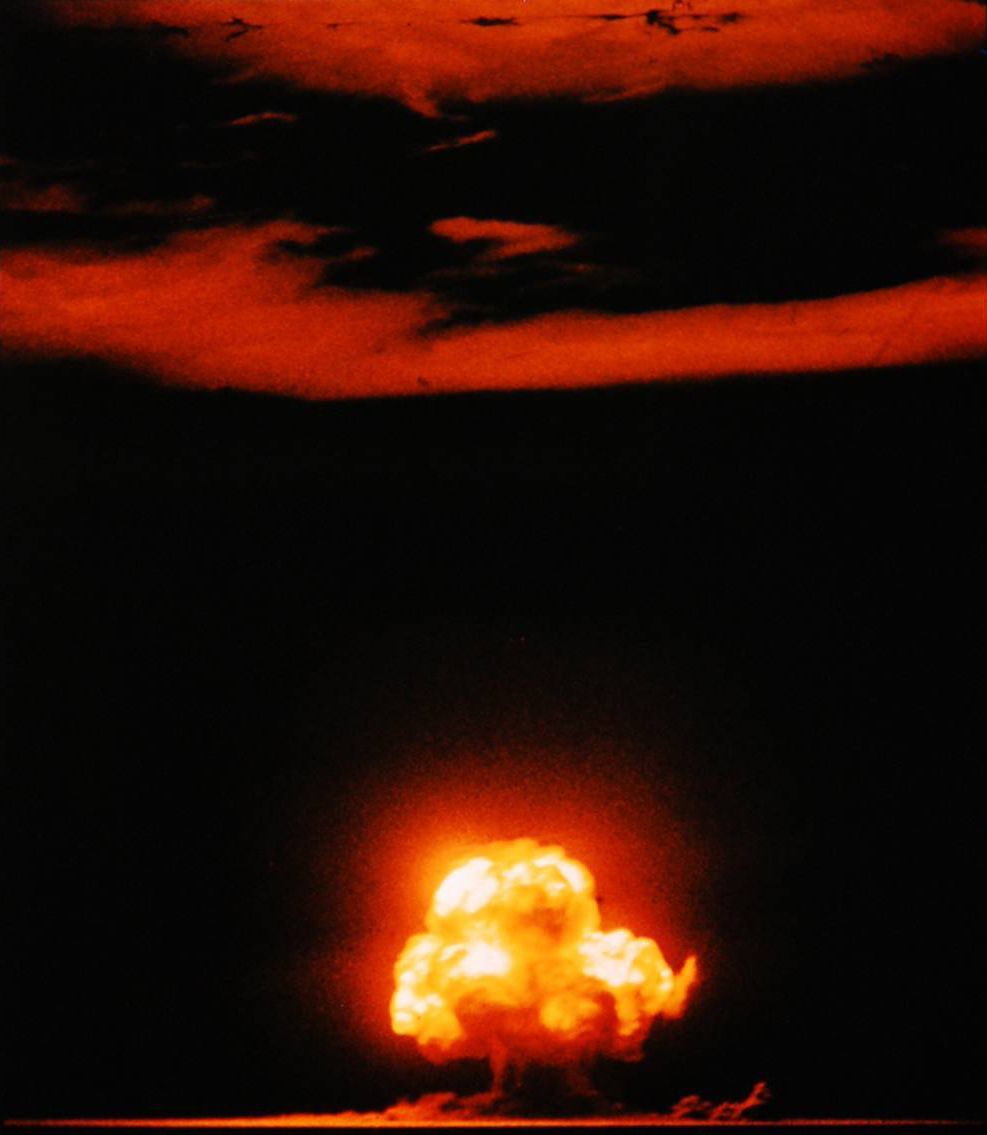 Photo by Jack Aeby
Photo by Jack Aeby
Atomic Sound
Oppenheimer has spent nearly two hours building to this moment. It’s just before dawn in this desert valley of central New Mexico, a waterless 90 mile stretch the Spaniards called the Jornada del Muerto, “the Journey of Death.” The scientists are gathered, donning protective glasses (and sunscreen, in the case of Edward Teller) to watch the Trinity test unfold, the first detonation of the atomic bomb. A countdown, a flash (“The whole country was lighted by a searing light with the intensity many times that of the midday sun”), and they all witness this fireball mushrooming upward.
Here, director Christopher Nolan and his sound team (almost thirty people, per the credits) subvert Hollywood a bit. We see mushroom cloud, we think: big booming explosion. But sound travels slowly, much slower than light. The camera (and the audience) is a few miles away. This film is going to stick to physics—not just atomic, but acoustic.
So there are forty seconds to fill between the explosion and its sound reaching the observers. The scientists gasp and clap and cheer in the desert silence. Oppenheimer himself, from an observation post, is quiet but transfixed, his eye watching this fireball unfold. The only sound is his breathing: hurried, excited, scared.
Then: an explosive thunder that shook the chairs and walls of the theater I saw the film in, a shockwave that knocked the scientists to the desert floor. It’s a highly effective one-two punch: you’re in awe of that mushroom cloud, and then the full brute force of its violence hits you forty seconds later.
A few scenes later, Nolan underlines this violence with one of the greatest uses of sound design I’ve ever seen (or heard). Oppenheimer is giving a celebratory speech to the assembled Manhattan Project. But how can he just celebrate, given what he knows happened to hundreds of thousands of Hiroshima and Nagasaki civilians? The stamping and clapping of the assembly sounds more like the atomic bomb explosion we heard earlier. When the crowd cheers, the soundtrack substitutes heavy silence instead. Occasionally, the sound designer lets some cheering through, but it’s mixed with agonized screams. Oppenheimer sees flashes of melting faces, flesh seared off, crying people. It’s horrible. There’s a price humanity pays for this feat of science. And the sound design depicts what happens when the atom bomb goes off in the soul.
A few weeks later, I’m in the car, listening to KOOP 91.7 FM. There’s an old-time country music show, and I haven’t caught the setup, but they’re playing all atomic-themed songs from the ’40s and ’50s. It covers the emotional spectrum: joyous (Karl and Harty, “When The Atom Bomb Fell”), religiously opportunistic (Lowell Blanchard and the Valley Trio, “Jesus Hits Like An Atom Bomb”), the religiously-tinged but deeply scared (the Louvin Brothers, “The Great Atomic Power”) the forced metaphor (Hank King, “Your Atom Bomb Heart”). Possibly the first song to grapple with this new invention was Slim Gaillard’s “Atomic Cocktail,” December 1945, a slinky, silly R&B ode to drinking and/or annihilation.
Hundreds more of these kinds of songs peppered the two decades after Hiroshima and Nagasaki. They slowly get weirder (“My Teenage Fallout Queen”) and darker (“We’ll All Go Together When We Go”). There’s a dip in the ’70s, then a resurgence in the ’80s as Reagan rattles his sad little saber. Since the end of the Cold War, atom bomb-themed songs have disappeared, but the bombs themselves haven’t. Nuclear holocaust feels distant, kitschy even.
We still don’t know what to make of these weapons. The songs suggest we’re terrified, ambivalent, hopeful, cynical, horny, despondent, a Rorschach test in the shape of a mushroom cloud. Oppenheimer and the rest of the Manhattan Project created something else in 1945: the awful sound of self-destruction. It’s hard for music to compete with that kind of noise.